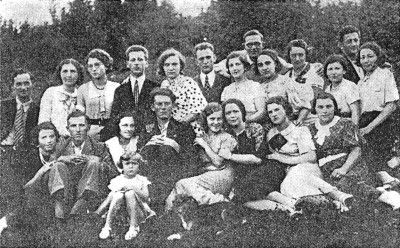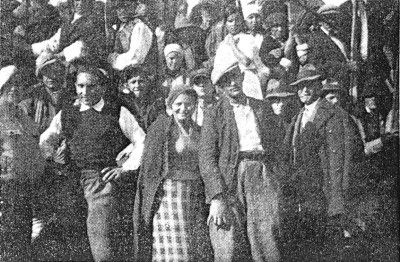 |
1) Soshia Stern, 2) Tusia Fendel, 3) Esther Trau, 4) Tinchia Koral,
5) Yehuda Teffer (Lerer), 6) his wife Yutka Teffer, 7) Yaakov Taneh, 8) Malka Trau.
Second row: Itka Lerer and her brother Yisrael Lerer, Miriam Zauerberg,
Salka Lerer, Soshia Gelobter, Sholo Taneh, Mania Fendel, unknown,
Chana and Shimshon Rechtschaffen, Ester Adlerstein, Rozia Weinfeld,
Vove Strassman



